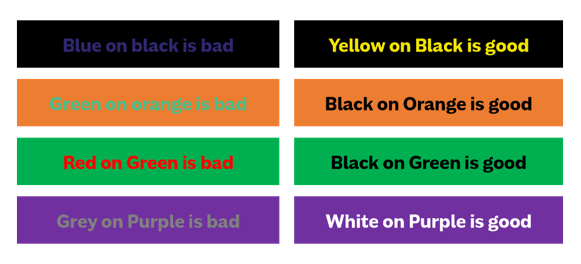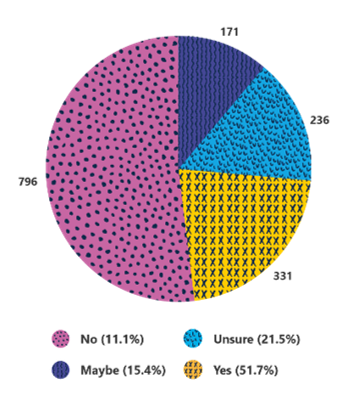People and culture business cases toolkit
By Sally Pritchett
CEO
Download your toolkit to build a business case for people and culture initiatives.
Need to make the case for investing in culture, wellbeing or communication? You’re not alone. Many great ideas struggle to get funded because their impact isn’t always easy to measure.
This two-part toolkit helps you change that. It’s built around our THRIVE methodology – a framework that helps organisations strengthen culture through communication. Each section looks at one of the six pillars that shape how people feel and perform at work: Talent, Human, Roadmap, Inclusion, Values and Experience.
Practical tools to help you make a business case for people and culture
In the free download, you’ll get:
-
Quick facts and data to show why culture, wellbeing and inclusion matter to business performance
-
Prompts and insights to help you link people-focused programmes to strategic outcomes
-
A link to an editable template to shape your ideas into a strong, evidence-based business case
It’s a practical way to back your ideas with evidence, show measurable impact and win support for people-focused change.
Want to dig deeper? Catch up on our webinar, including the 6 best hacks for successfully winning investment – full of practical advice to help you strengthen your next pitch.
If you’d like to build on it with deeper insight or strategic support, our Co-Creator advisory services are here to help you plan smarter and move your culture forward. And if you need support forming your business case for people and culture initiatives, talk to us – we’re always happy to help you think it through.
Download now and start building your business case
Workplace Safety Calendar 2026
By Sally Pritchett
CEO
Free downloadable calendar of key workplace health and safety awareness days.
Keep safety front of mind all year round
Our free Workplace Safety Calendar highlights the key dates that help you plan safety communications and keep teams focused on what matters most – staying safe.
From construction sites to warehouses and offices, consistent communication helps make safety part of everyday thinking. Awareness days are a simple but powerful way to bring key messages to life, cut through the noise and build understanding across large, dispersed or frontline teams.
What’s inside
- Key UK and global workplace safety and health awareness days
- Dates covering topics from fire safety to mental health and safe driving
- Practical ideas to help you share clear, consistent safety messages all year
If you find this calendar helpful, you might also like: Employee Wellbeing Calendar 2026, Sustainability and Environmental Awareness Calendar 2026, Future of Work, Productivity & Digital Skills Calendar 2026, and Diversity and Inclusion Calendar 2026.
If you’re running safety programmes or looking to strengthen how safety is communicated across your workforce, get in touch to see how we can help.
Download your free Workplace Safety Calendar 2026
Future of Work, Productivity & Digital Skills Calendar 2026
By Sally Pritchett
CEO
Free downloadable calendar of key dates focused on the future of work, productivity and digital skills.
Help your people thrive in the future of work
Our free Future of Work, Productivity and Digital Skills Calendar brings together key global dates that spotlight innovation, learning and technology in the workplace.
As AI, automation and digitisation continue to reshape how we work, communication is key to keeping your people informed, confident and engaged. This calendar helps you do just that – giving you moments throughout the year to spark conversations, share progress and build digital confidence across your organisation.
Research shows that 52% of employees are worried about how AI might be used in the workplace, while only 36% feel hopeful. Using these key dates as prompts for dialogue helps shift that balance — turning uncertainty into opportunity and helping people feel part of the journey.
What’s inside
- Key global dates focused on technology, digital learning and productivity
- Awareness days celebrating innovation, AI and the evolving world of work
- Practical ideas to help you communicate change and bring people with you
If you find this calendar helpful, you might also like our Diversity and Inclusion Calendar 2026 and Employee Wellbeing Calendar 2026.
If you’re driving digital transformation or looking for communication support to help your people adapt with confidence, get in touch to see how we can help.
Download your free Future of Work, Productivity & Digital Skills Calendar 2026
Employee Wellbeing Calendar 2026
By Sally Pritchett
CEO
Free downloadable calendar of key UK employee wellbeing awareness days.
Support employee wellbeing in 2026
Our free UK Employee Wellbeing Calendar highlights the key awareness days that help you plan meaningful wellbeing activities across the year.
With 78% of employees saying work stress affects their wellbeing, creating supportive and positive workplaces has never been more important. The good news is that 89% of employees say their leaders are now more open about discussing mental health – showing real progress in how organisations care for their people.
What’s inside
-
A wide range of UK and global wellbeing awareness days
-
Dates focused on mental, emotional, physical and financial wellbeing
-
Practical ideas to help you turn awareness days into meaningful action and conversation
If you find this calendar helpful, you might also like: Diversity and Inclusion Calendar 2026, Sustainability and Environmental Awareness Calendar 2026, Future of Work, Productivity & Digital Skills Calendar 2026, and Workplace Safety Awareness Calendar 2026.
If you’re developing your wellbeing strategy or looking to engage employees in a more meaningful way, get in touch to see how we can help.
Download your free Employee Wellbeing Calendar 2026
Diversity and Inclusion Calendar 2026
By Sally Pritchett
CEO
Free downloadable calendar of key UK diversity and inclusion awareness days
Make it easier to plan meaningful inclusion activity throughout 2026
Our free UK Diversity and Inclusion Calendar brings together the key awareness days, cultural celebrations and events that matter most to your people.
Creating a workplace where everyone feels they belong takes ongoing effort. With 65% of employees wanting to feel a stronger sense of belonging at work, staying aware of important diversity and inclusion dates can help you keep that focus alive across the year.
What’s inside
-
A wide range of UK and global diversity and inclusion awareness days
-
Dates covering cultural, religious, age, gender, disability and LGBTQ+ awareness and inclusion
-
Practical ideas for how to turn awareness days into meaningful conversations and actions
If you find this calendar helpful, you might also like: Employee Wellbeing Calendar 2026, Sustainability and Environmental Awareness Calendar 2026, Future of Work, Productivity & Digital Skills Calendar 2026, and Workplace Safety Awareness Calendar 2026.
If you’re developing your inclusion strategy or looking to engage employees in a more meaningful way, get in touch to see how we can help.
Download your free Diversity and Inclusion Calendar 2026
Creating cultures of neuroinclusion
By Sally Pritchett
CEO
Discover how fostering neuroinclusion in the workplace can build an environment where all employees thrive.
Discover how fostering neuroinclusion in the workplace can build an environment where all employees thrive.
Diversity of thought and minds can bring fresh perspectives and innovative ideas. According to Deloitte, “organisations that make an extra effort to recruit, retain, and nurture neurodivergent workers can gain a competitive edge from increased diversity in skills, ways of thinking, and approaches to problem-solving”. With an estimated 15-20% of adults being neurodivergent, businesses that fail to support neurodiverse individuals risk falling behind. It’s essential for businesses to support the neurodivergent community by making necessary accommodations for everyone, regardless of diagnosis.
We were delighted to have Becs Tridgell from Autism Unlimited join us for our most recent ‘Tune In’, session, where we tuned into the voices of the neurodivergent community, looking to learn practical steps and strategies to foster a neuroinclusive workplace culture that values and supports every employee.
Watch the video below for a full recap, and check out the session highlights and key insights below:
The benefits of a neuroinclusive workforce
Neurodivergent employees bring unique strengths that can transform workplaces. Skills like hyper-focus, creative thinking, innovative problem-solving, empathy, and detailed analysis are just a few examples of the value neurodivergent individuals can offer when supported effectively.
However, these strengths can only thrive when workplaces address the challenges neurodivergent employees face. By fostering a culture of neuroinclusion, organisations unlock not only individual potential but also greater collaboration, loyalty, and long-term success.
Common challenges faced by neurodivergent employees
Many neurodivergent employees encounter significant barriers in the workplace. Traditional recruitment processes, such as interviews that emphasise eye contact or sociability, often overlook the strengths of neurodivergent candidates.
Masking – where individuals consciously or unconsciously hide their neurodivergent traits to appear more “typical” – is another challenge. While masking can help individuals fit into workplaces that may not be inclusive, it often leads to exhaustion, burnout, and reduced engagement.
Sensory sensitivities, like difficulties with noise, lighting, or smells, can also make everyday tasks unnecessarily difficult. For example, an open-plan office might create challenges for someone with auditory sensitivities, reducing their ability to focus or perform at their best.
The power of effective communication
Communication is a cornerstone of neuroinclusion. By prioritising clarity, consistency, and compassion, organisations can create an environment where neurodivergent employees feel understood, supported, and empowered.
Clarity
Clear communication ensures that everyone, regardless of neurotype, can engage fully. This includes:
- Sending agendas in advance of meetings
- Chunking information into smaller, manageable parts
- Using visual aids to support verbal explanations
- Providing assistive technologies
Consistency
Consistency builds trust and reliability. Neurodivergent employees often thrive in environments where expectations and processes are supported and made clear. Examples include:
- Assigning a buddy to new employees for ongoing support
- Standardising accommodations, like offering quiet spaces or noise-cancelling headphones
- Implementing policies to create sensory-friendly environments, such as discouraging strong smells in open-plan offices
Compassion
Compassionate communication acknowledges individual needs and ensures everyone feels valued. Tailored adjustments might include:
- Allowing regular breaks for employees who need to manage energy levels
- Providing specific ergonomic tools, like supportive chairs or coloured overlays
- Offering flexibility in how tasks are completed, enabling employees to work in ways that suit their strengths
Practical steps to build a neuroinclusive workplace
Neuroinclusion requires thoughtful, tailored adjustments that enable everyone to thrive, not just the neurodivergent.
Some practical steps include:
- Rethinking job design: Tailor roles to individual strengths rather than expecting everyone to fit into rigid job descriptions.
- Creating dedicated quiet spaces: Offer areas where employees can decompress or work in silence.
- Normalising accommodations: Provide tools like noise-cancelling headphones, visual aids, or flexible schedules to support productivity.
- Improving recruitment processes: Redesign interviews to focus on practical skills rather than sociability or traditional cues like eye contact.
- Fostering a supportive culture: Encourage open dialogue about neurodiversity to reduce stigma and build trust, ensuring employees feel safe to share their needs.
While supporting neurodivergent employees is both a legal and moral obligation – it’s a strategic advantage too. Through education, adjustments, and open dialogue, we can create workplaces where every mind is valued, and every employee can thrive.
If you need support on your journey to building a more neuroinclusive working environment, we’re here to help. Whether it’s developing culture change programmes, creating communication campaigns that drive inclusion, or ensuring your communications are accessible to all, we can provide the expertise you need. Talk to us today to start making a meaningful difference in your workplace.
Webinar: Empowering workforces to be neuroinclusive
Employee Wellbeing Calendar 2025
By Sally Pritchett
CEO
Looking for the latest version? Get the Employee Wellbeing 2026 Calendar here.
Stay committed to your employees’ health and wellbeing in 2025 with our free downloadable calendar that highlights key health and wellbeing dates and events.
Why Employee Wellbeing Matters
Engaging your employees and delivering important health and wellbeing communications is an ongoing process that requires consistent attention throughout the year. Recent statistics reveal a concerning trend: global workplace wellbeing is declining, with a staggering 78% of employees reporting that work stress has negatively impacted their physical health.The role of employers in addressing this issue is increasingly clear and crucial. A overwhelming 93% of employees believe their employer is responsible for helping them manage their mental health.
Encouragingly, 89% of employees report that their company’s leaders openly discuss their own mental health, indicating that discussions around wellbeing in the workplace are becoming more commonplace and expected. This shift highlights the growing importance of prioritising employee wellbeing as an integral part of organisational culture and strategy.
How Can Our Calendar Help You?
- Comprehensive Planning: Helps you plan your employee wellbeing programmes for 2025.
- Key Dates: Includes important health and wellbeing celebration and awareness dates throughout the year to keep your business on track.
- Conversation Starters: Provides top tips for initiating important discussions about health and wellbeing with your employees, encouraging healthier behaviors and breaking down stigmas.
If you find this calendar useful, then check out our Diversity and Inclusion Calendar and Sustainability and Environmental Awareness Calendar.
If you’re looking for a partner to help you roll out your employee health and wellbeing programmes, we’d love to hear from you.
Download our Employee Wellbeing calendar
Diversity and Inclusion Calendar 2025
By Sally Pritchett
CEO
Looking for the latest version? Get the Diversity and Inclusion Calendar 2026 here.
Never miss an important date in 2025 with our free downloadable calendar that includes key diversity and inclusion awareness dates and events.
Nurturing a true sense of belonging among your employees can’t be a short-term objective – it’s an ongoing commitment to ensuring that everyone in your workforce feels heard, respected and valued. And with 65% of employees wanting to feel a strong sense of belonging at work, now is the time to ensure your business is aware of diversity and inclusion days that matter to your employees.
How can our calendar help you?
- Helps keep your diversity and inclusion employee engagement programmes on track.
- Includes a wide range of cultural, racial, religious, age, gender, sexual orientation and disability awareness dates.
- Top tips for opening up and developing important conversations to help you make the most of these events
If you find this calendar useful, then check out our Employee Health and Wellbeing Calendar and Sustainability and Environmental Awareness Calendar.
If you’re looking for support in rolling out your diversity and inclusion programmes, get in touch to see how we can help.
Download our Diversity and Inclusion calendar
Great for women, great for all
By Sally Pritchett
CEO
Explore how we've been ranked among the top 10 of the UK's Best Workplaces for Women by focusing on creating an inclusive, supportive culture that benefits everyone.
Explore how we've been ranked among the top 10 of the UK's Best Workplaces for Women by focusing on creating an inclusive, supportive culture that benefits everyone.
We’ve been ranked in the top 10 UK’s Best workplaces for Women (Small Businesses), alongside 330 companies including industry-leading and global brands. This achievement is a team effort, not based on management promises, policies and words on an entry form, but on day-to-day actions leading to genuine and personal team feedback through Great Place to Work’s independent employee survey. Data analysed looks at how well organisations have removed barriers to female career advancement and created workplaces where all employees can flourish, regardless of gender.
Whilst we’re delighted to have achieved this incredible accolade, our mission is to create workplaces that are fairer, healthier and happier for all – both at Something Big and in the organisations we support.
Our journey to this achievement hasn’t been about giving women special treatment. It’s been about driving a positive and inclusive workplace culture, for everyone, which means breaking down barriers for women in particular.
Regardless of where we want to be as a world and society, we’re not there yet. The world is still patriarchal, unconscious bias continues to be a challenge, there are still not enough visible female role models and gender pay gaps remain a problem.
‘”Parity in the workplace remains a work in progress.”
Great Place to Work
Positive change is visible on the horizon though. In the UK’s Best Workplaces for Women, 42% of C-suite positions are held by women versus just 28% in FTSE 350 organisations. Pay gaps are narrowing in the UK, with women earning 92p to their male counterparts £1, and companies ranked in this list have closed that gap further, with the UK average of female employees agreeing they are ‘paid fairly for what the work they do’ at just 53%, in the Top 5 UK’s Best Workplaces for Women a whopping 83% of female respondents agreed they were fairly paid.
The UK’s Best Workplaces for Women are also proof that delivering work/life balance is possible, whilst the UK average stands at 60% for ‘people are encouraged to balance their work life and personal life’ in the UK’s Best Workplaces for women, a significantly higher 84% of employees agree with this statement.
What are we getting right at Something Big to earn our 8th place ranking?
#Flexibility
Flexibility isn’t a buzzword, a policy or a broad commitment – it’s a huge undertaking that takes a team effort to deliver. According to GPTW’s report, 40% of women not working say that access to flexible work would mean they could take on paid work and 77% said they’d be more likely to apply for a job if it advertises flexible working options.
At Something Big, flexibility is a way of life. From changing and flexing working hours around ever-changing care arrangements to sabbaticals mean that work can fit around life, rather than squeezing life around gaps in work.
Our tip: Delivering flexibility successfully isn’t just about senior leadership commitment, it’s also about peer-to-peer support. Working alongside colleagues on different hours or shorter days/weeks can be tough, it takes empathy, great communication skills and respect for boundaries to make it work without sacrificing quality, productivity or pace. Support and nurture your whole team to make flexibility work for everyone.
#Appreciation
Everyone wants (and deserves) to feel appreciated. For women, this is especially critical, when outside of work their effort and contribution can often feel invisible and taken for granted. In the workplace, there’s a disparity between genders when it comes to feeling that management shows appreciation for good work and extra effort. 64% of men feel appreciated versus 58% of women. Unsurprisingly, this gap is closed in companies featured on this list, with both genders scoring equally and with higher appreciation levels, with both genders scoring a significantly higher 85%.
Our tip: Appreciation often costs nothing. We believe it’s as critical a component as other rewards are often overlooked or left to busy line managers who might not always have time. Set up structures that encourage regular peer-to-peer appreciation, celebrate awareness days like Employee Appreciation Day, even when budgets are under pressure try to make space for fun.
To find out more about what it takes to create a workplace where women can thrive, you can read the full report here or talk to us about our journey and how we’re helping the organisations we’re supporting.
Creating accessible communications: practical tips and strategies
By Sally Pritchett
CEO
For communications to be impactful and inclusive, they must also be accessible. Discover practical solutions on how to maximise your impact and reach diverse audiences.
For communications to be impactful and inclusive, they must also be accessible. Discover practical solutions on how to maximise your impact and reach diverse audiences.
Creating accessible communications is not just a nice to have, but should be a necessity. Ensuring that everyone, regardless of their abilities, can access and understand information is vital for inclusion and equality.
In this article and video, we delve into practical tips and strategies for creating more accessible communications, particularly focusing on documents.
Why accessible communications matter
Accessible communications are essential for ensuring that everyone can participate fully and equally. This includes people with visual, hearing, learning, cognitive, and mobility impairments, as well as those with limited proficiency in the language used.
There are several compelling reasons to prioritise accessible communications:
- Inclusion and equality: Everyone deserves access to information and the ability to participate.
- Improved engagement and efficiency: Reaching a broad audience and including those who have previously been excluded will increase engagement with your content.
- Good practice and compliance: While there are different regulations for accessibility depending on audience and industry, it goes beyond compliance. Accessibility is an ethical obligation to ensure equal access to information.
- Business benefits: Accessible communications can expand your audience or customer base, and improve the overall user experience, leading to higher satisfaction and brand engagement.
How do we know what is accessible and what requirements to meet?
In the UK, accessibility regulations came into force for public sector bodies in September 2018, covering websites, mobile applications, and intranets. While these regulations do not apply to all forms of communication or across all sectors, they have provided us with universal guidelines we can and should follow to ensure inclusivity.
The Web Content Accessibility Guidelines (WCAG) are the primary standards to adhere to, with the current version being WCAG 2.2. These guidelines focus on four key areas:
- Perceivable: Ensuring content can be perceived through sight, hearing, or other senses.
- Operable: Making sure all users can operate the interface, regardless of ability.
- Understandable: Ensuring information is clear and easy to interpret.
- Robust: Designing content to be reliable and functional across a wide range of technologies and capabilities.
How to create accessible documents
Now let’s get into the practical tips and strategies for creating more accessible communications, particularly focusing on documents.
Format
To ensure maximum accessibility, understanding the final use of your document is vital. Decide if your document will be used online, in print, or both, and design accordingly. For online use, a landscape format reduces scrolling and improves usability, while for print, a standard portrait A4 size is ideal. You should also consider creating separate versions for digital and print use. Addressing accessibility from the start is more efficient than fixing issues later.
Readability
Aim for a reading level accessible to the average reader. In the UK, it is encouraged when writing for a general audience to aim for a reading age of 9 years old. Headings, short paragraphs, bullet points, and images can help to break up text and reduce reading fatigue. Make the most of tools like the Hemingway Editor to help identify readability challenges and simplify content.
Screen readers and voiceovers
Screen readers are essential for many users, so ensure your documents are compatible with screen readers, which read text aloud. Consider creating voiceover versions of documents to provide a more engaging and easier-to-listen-to experience. Text-to-speech AI voice generators can be a cost-effective way of doing this. However, adding subtitles and captions to videos is a basic requirement.
Navigation
Good navigation improves document usability. Be sure to always include next and back buttons, and a back-to-contents button. Navigation elements should be tagged for screen readers and placed predictably at the top of pages.
Typography
Typography plays an essential role in creating accessible documents. Here are some key guidelines from WCAG 2.2 to help you design text that is easy to read and navigate:
- Use visual hierarchy and proper tagging (H1, H2) for headings.
- Choose sans-serif fonts for body text and serif fonts for headings.
- Aim for a minimum font size of 16 pixels or 12 points.
- Avoid all caps, as screen readers read them as individual letters.
- Use adequate line spacing and avoid justifying text to prevent readability issues.
Colour Contrast
Ensure high contrast between text and background for readability. Consider colour blindness and test your document’s colour contrast using online tools. Providing a dark mode option can enhance accessibility.

Forms, tables, and diagrams
Make information comprehensible without relying solely on colour. Use patterns and ensure proper tagging for screen readers. Consider voiceover versions for complex data presentations to enhance understandability.
Imagery
Use images wisely to support understanding. Ensure they have alternative text (alt text) for screen readers to describe the content. Unimportant visual design should be tagged as decorative so as not to confuse screen readers.
Getting started with accessible communications
Now, it’s your turn. Here are three ways to get started:
- Make one piece of communication accessible this week: it could be a social media post, a website update, or an internal document. Every step counts.
- Review your organisation’s accessibility policy: and if you don’t have one, advocate for creating one.
- Consider signing up for a free accessibility training course: take your learning further, there are lots of resources available.
Accessible communications are not just about adhering to regulations; they are about making a meaningful difference in how we connect and communicate with everyone. By prioritising accessibility, we can ensure that our messages are inclusive, effective, and impactful for all audiences. If you need support in creating accessible communications, our team is here to help.
Webinar: Accessible Communications: Maximising impact and inclusivity
In this concise virtual session, our Creative Services Director, Sarah Neale shared practical strategies to help your messaging reach and resonate with diverse audiences.











